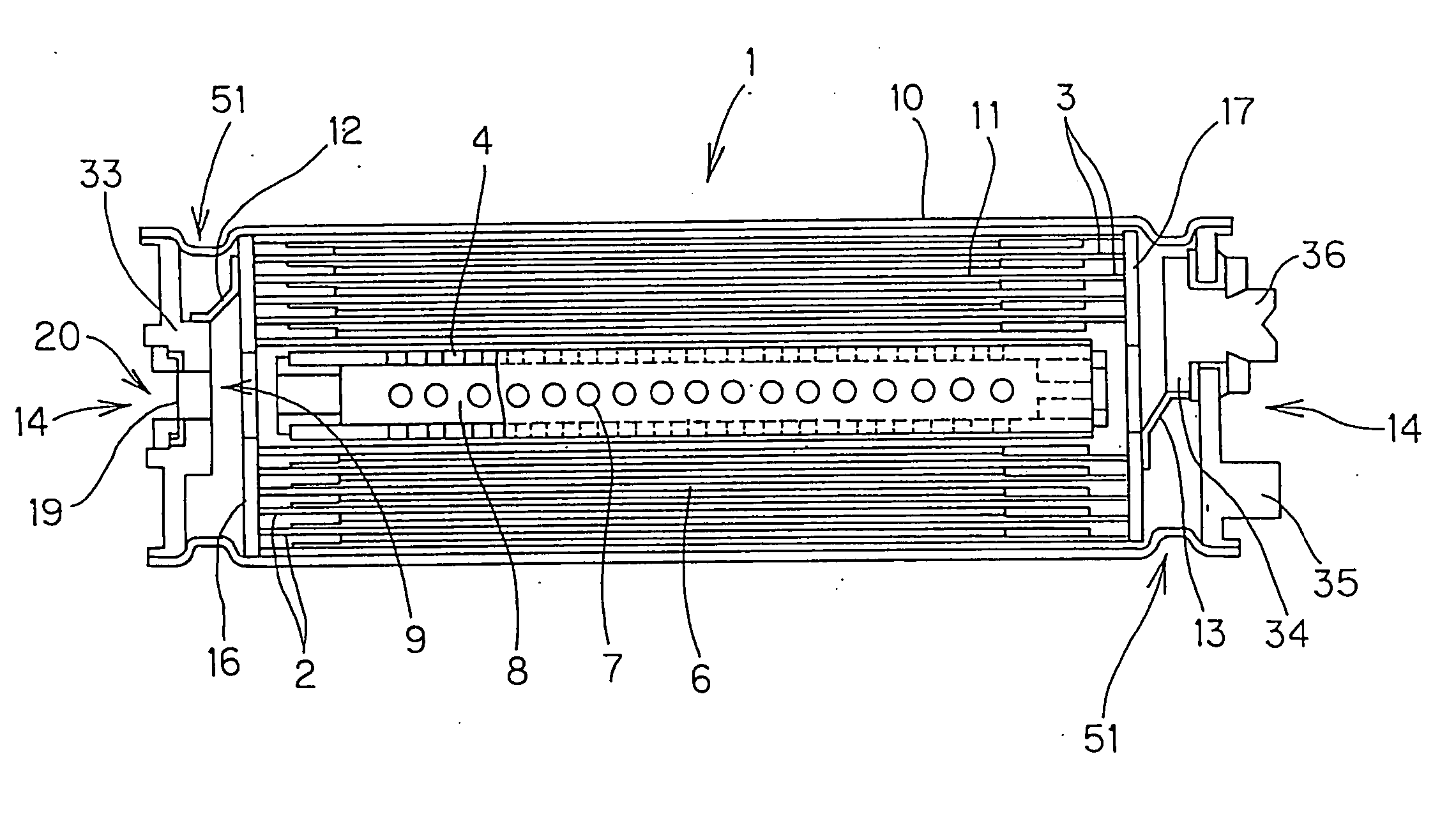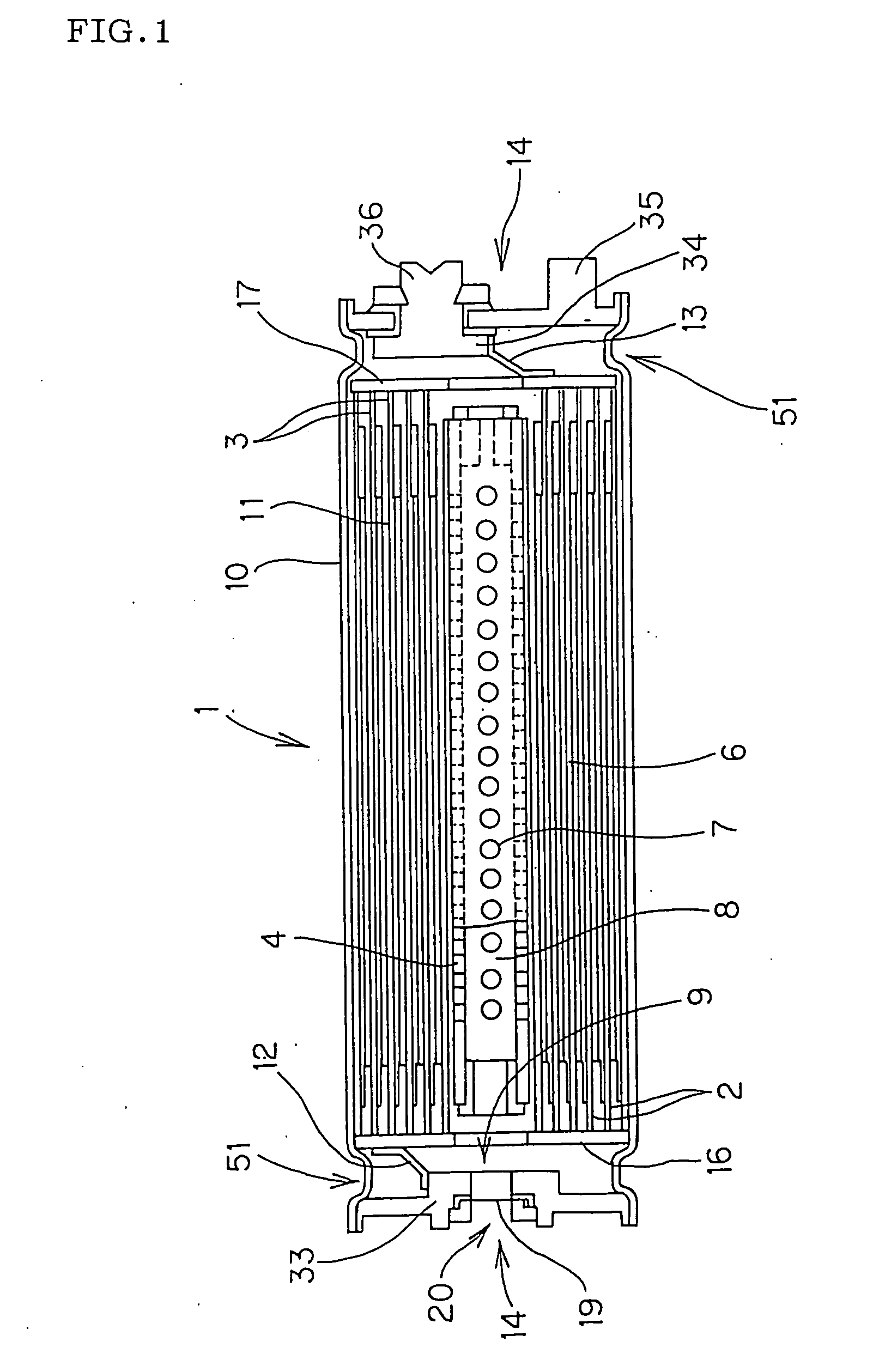Lithium secondary battery
- Summary
- Abstract
- Description
- Claims
- Application Information
AI Technical Summary
Benefits of technology
Problems solved by technology
Method used
Image
Examples
example 1
[0088] To lithium manganese (Li was excessive, and a part of Mn was replaced with Ti in a composition represented by LiMn2O4) spinel used as a cathode active substance, 4% by mass of acetylene black in terms of an external ratio was added as an auxiliary conductive agent, and further a solvent and a binder were added to prepare a cathode slurry. Opposite surfaces of an aluminum foil having a thickness of 20 μm were coated with the slurry in such a manner as to achieve a thickness of about 50 μm, and a cathode plate having a thickness of about 120 μm was prepared.
[0089] On the other hand, opposite surfaces of a copper foil having a thickness of 10 μm were coated with an anode slurry prepared by use of graphite as an anode active substance in such a manner as to achieve a thickness of about 40 μm, and an anode plate having a thickness of about 90 μm was prepared.
[0090] The prepared cathode plate and anode plate were wound, via a separator (PP / PE / PP (three layers)), around a core mem...
example 2
[0093] A lithium secondary battery Example 2 was manufactured by a method similar to that of Example 1 except that lithium nickel oxide (a part of Ni was replaced with Co and Al in a composition represented by LiNiO2) spinel was used as a cathode active substance. Furthermore, an overcharging test was conducted in the same manner as in Example 1.
PUM
 Login to View More
Login to View More Abstract
Description
Claims
Application Information
 Login to View More
Login to View More - R&D
- Intellectual Property
- Life Sciences
- Materials
- Tech Scout
- Unparalleled Data Quality
- Higher Quality Content
- 60% Fewer Hallucinations
Browse by: Latest US Patents, China's latest patents, Technical Efficacy Thesaurus, Application Domain, Technology Topic, Popular Technical Reports.
© 2025 PatSnap. All rights reserved.Legal|Privacy policy|Modern Slavery Act Transparency Statement|Sitemap|About US| Contact US: help@patsnap.com



